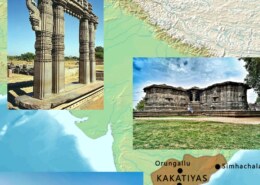The tradition of wall paintings in India is unbroken , which evolved and developed through different phases into various types . illustrate.
Evolution of Nagara Temple Architecture The Nagara style, indigenous to North India, is characterized by its distinctive shikhara, a towering superstructure that culminates in an amalaka (disc-like stone) and a kalasha (pot-shaped finial). Let's trace its evolution:
Evolution of Nagara Temple Architecture
The Nagara style, indigenous to North India, is characterized by its distinctive shikhara, a towering superstructure that culminates in an amalaka (disc-like stone) and a kalasha (pot-shaped finial).
Let’s trace its evolution:




The tradition of wall paintings in India is a rich and continuous heritage that has evolved through various phases, reflecting the country's diverse cultural and historical milieu. From ancient rock shelters to contemporary murals, Indian wall paintings have undergone significant transformation, botRead more
The tradition of wall paintings in India is a rich and continuous heritage that has evolved through various phases, reflecting the country’s diverse cultural and historical milieu. From ancient rock shelters to contemporary murals, Indian wall paintings have undergone significant transformation, both in technique and subject matter.
1. Prehistoric Era: The earliest examples of Indian wall paintings are found in the Bhimbetka rock shelters, showcasing scenes of daily life and hunting.
2. Classical Period: The Ajanta and Ellora caves represent the zenith of Buddhist art, with intricate frescoes depicting the Jataka tales and other religious themes. The use of natural pigments and meticulous detailing marks this period.
3. Medieval Period: The tradition continued with the murals of Kerala and the Vijayanagara Empire, characterized by vibrant colors and dynamic compositions. The Lepakshi temple murals are notable for their depiction of Hindu mythology.
4. Mughal Era: The Mughal miniature paintings influenced wall art, with a focus on realism, perspective, and rich detailing. The frescoes in Rajasthan palaces and havelis are prime examples.
5. Modern and Contemporary: The tradition persists in modern times with street art and public murals, blending traditional motifs with contemporary themes.
In conclusion, the unbroken tradition of wall paintings in India reflects a continuous dialogue between past and present, preserving cultural narratives while embracing new artistic expressions.
See less